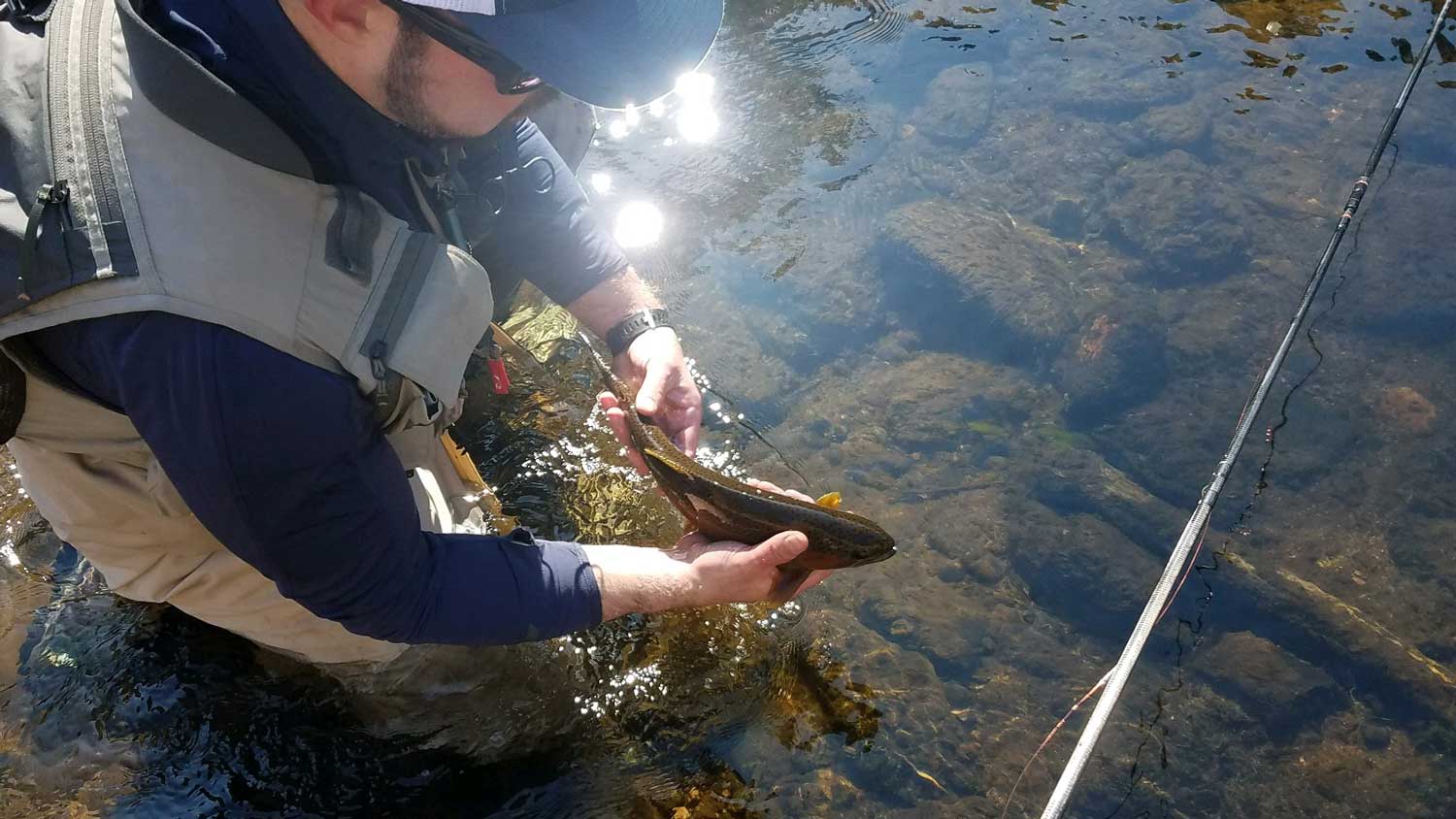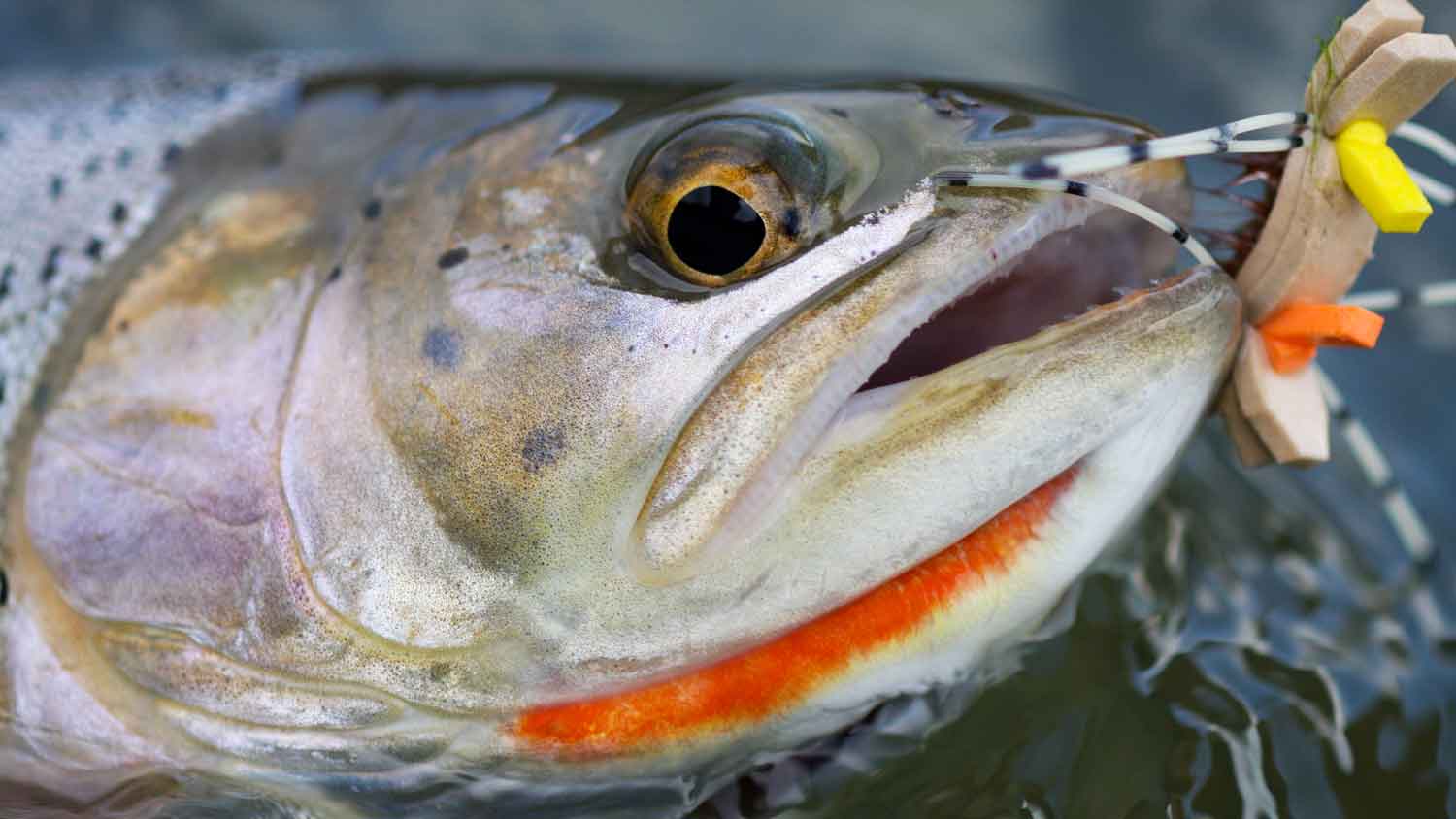
Fly fishing is one of the most popular and ancient forms of fishing, with references dating back as far as the 2nd century, when Claudius Aelianus described the practice of Macedonian anglers on the Astraeus River. Forward several centuries to 1655, where a man named Charles Kirby designed a fishing hook that is still commonly used today, and that’s where history stops, with little having changed since.
The favorite sport uses artificial flies commonly made with natural and synthetic materials that match the local terrestrial and aquatic insects attractive to the target fish species, which are then cast with a fly rod and a fly line. There are various techniques and methods involved depending on the species targeted, but if you’re a newbie to the sport, then we’ve put together some handy tips for you to get started.
Here are the TOP 10 TIPS for Beginner Fly Fishers
1. Choose your body of water
If you’re starting, it’s better to do your research on the body of water you first want to fish on. Ideally, we’d recommend finding a smaller venue with stocked still waters. This is because they’ll be consistently rewarding while you perfect your techniques. Once you’ve gained some confidence, you can move onto fishing in more natural waters like a river.

2. Compile good fly fishing starter gear
When you’re first getting a feel for fly fishing, we wouldn’t recommend spending a fortune on a starter kit. That said, to get the most out of your new venture, you want to ensure the kit has the essentials to make your day on the water enjoyable. The barebone basics would include some of the following:
- Fly rod
- Reel and Line
- Hand-tied flies
- Fly box
Additional items worth considering are:
- Fly Fishing Hat
- Sunglasses
- Rain Coat
- Vest or pack
- Waders, wader belt, and wader boots
- Clippers
- Forceps or clamps
- Slip shot or weights
- Floatant
- Indicator
- Leaders
- Tippet
You can see our range of fly kits here.

3. Recommended fly line and flies
There’s a vast array of fly lines on the market. However, we recommend an all-around fly line that matches the weight of your rod. If you have a six weight rod, use a six-weight line.
When it comes to the actual rod, an excellent all-around option is a nine-foot, six-weight rod with a simple floating line and a leader about as long as the rod, which will balance out your cast for a smoother landing when dry fly fishing and enough leader to get to dear waters when you are nymph fishing.
For the flies, depending on what style of fly fishing you want to start with, you’ll want some effective dry flies, streamers and nymph patterns.

4. Be sure to practice
Controlling your line well under both short and long distances is going to make the experience easier. You can even practice on dry land with markers laid out to improve accuracy. Avoid false casts and long casts, especially at first, as you will be more successful in the short-range and will have fewer snags or hookups with things around you.
Another good thing to practice is line mending on moving water. This stops your flies from moving faster or slower in the river current in what’s known as ‘drag.’ Drag tells nearby fish that the fly isn’t real.
Learning to mend will also help you keep the fly in the water for as long as possible, which will make the fish more likely to devour your presentation.
Top tip: One mending technique is to ‘Jump’ the rope like you would if you were swinging a skipping rope for someone to jump in the middle of. Lift the tip of the rod skywards, breaking the surface tensions between your line and the water, then ‘jump’ the rope. Easy!
5. Know your knots
There are five knots you need to know inside and out when fly fishing:
- Arbor Knot.
- Blood Knot
- Double Surgeon’s Knot
- The Improved Clinch Knot
- Non-Slip Loop Knot
6. Safety first
Although fly fishing isn’t an extreme sport, injuries can still happen. When working with water, slips and trips are a common occurrence, so make sure you pack a basic first-aid kit and map out your path before you wade in. You’ll also be wise to add some eye protection to your gear to avoid wayward flies snapping back in your face. Additional considerations are the weather, lightning storms, and nearby wildlife. Keep an eye to the sky as bad weather can move in fast.
Top tip: Your waders can fill up with water and weigh down your legs like bricks, which makes getting to shore very difficult and has resulted in people drowning. Keep this danger in mind and always wade responsibly. Always have a belt around your waters as this will slow down the flow of water into them in case you do fall in.
7. Familiarize yourself with fishing rules
As a beginner, it is imperative you know your fishing etiquette and the differences in the rules and regulations for each fishery you visit. For example, some fisheries only allow you to use two flies at a time, and others limit the size of the hook that you can use. Check your local rules and regulations before heading out the water.
8. Obtain your license
Once you know all the rules, you will need to obtain your license, which can be bought in most states online, by phone or at retail establishments. 100% of the license fees go towards conservation and restoration, so you can be sure you’re supporting the best practice of your sport. In some states, it also acts as an insurance card as some of the money goes back to search and rescue, so if you do need medical assistance, you won't be left with a hefty bill.
9. Entomology is helpful
You don’t need a Ph.D. in entomology to find it useful, but studying the insects in the places you fish can help you become a pro in no time. For example, trout often prefer one food source over another. Here at Drifthook, we have taken the headache out of Entomology with our easy to use system that comes with all of our fly fishing kits.
10. Respect your catch
Finally, it should go without saying that having worked hard to catch your chosen fish, your reward is the elation in doing so. The best way of respecting the sport and the fish that you caught is to set it free so another fisherman can enjoy the same thing in the future.
When you catch a fish, we recommend you try not to handle it too much. Fish have a layer of mucus that protects them from diseases. Contact with dry surfaces, such as your hands, a dry net, boat bottoms, or land, can remove this protective slime and make fish more susceptible to diseases. So if you don’t have a net, make sure you wet your hands before handling a fish.
If you’d like a photo, see if you can keep it in the net in the water, or lift it quickly and gently, taking care not to squeeze too hard as this can cause damage to its internal organs and kill them shortly after (even if they swim away at first). Your aim is to give the fish the best chance of survival, so respect your catch and in doing so respect your sport.
About the Author
Matthew Bernhardt, a third-generation Coloradan, grew up at the forefront of the state’s fly-fishing revolution, enjoying time on the water side by side with experienced guides and lifelong anglers.
By combining his passion for fly-fishing with input from other experienced fly-fishers and guides and his fine arts degree from Colorado State University, Matthew spent five years carefully developing the Drifthook Fly Fishing System, built to help every angler catch more trout.
When he’s not spending time with his wonderful family, you’ll find him out on the water catching MONSTER trout, and he anxiously looks forward to the day when his kids are old enough to join him there.



